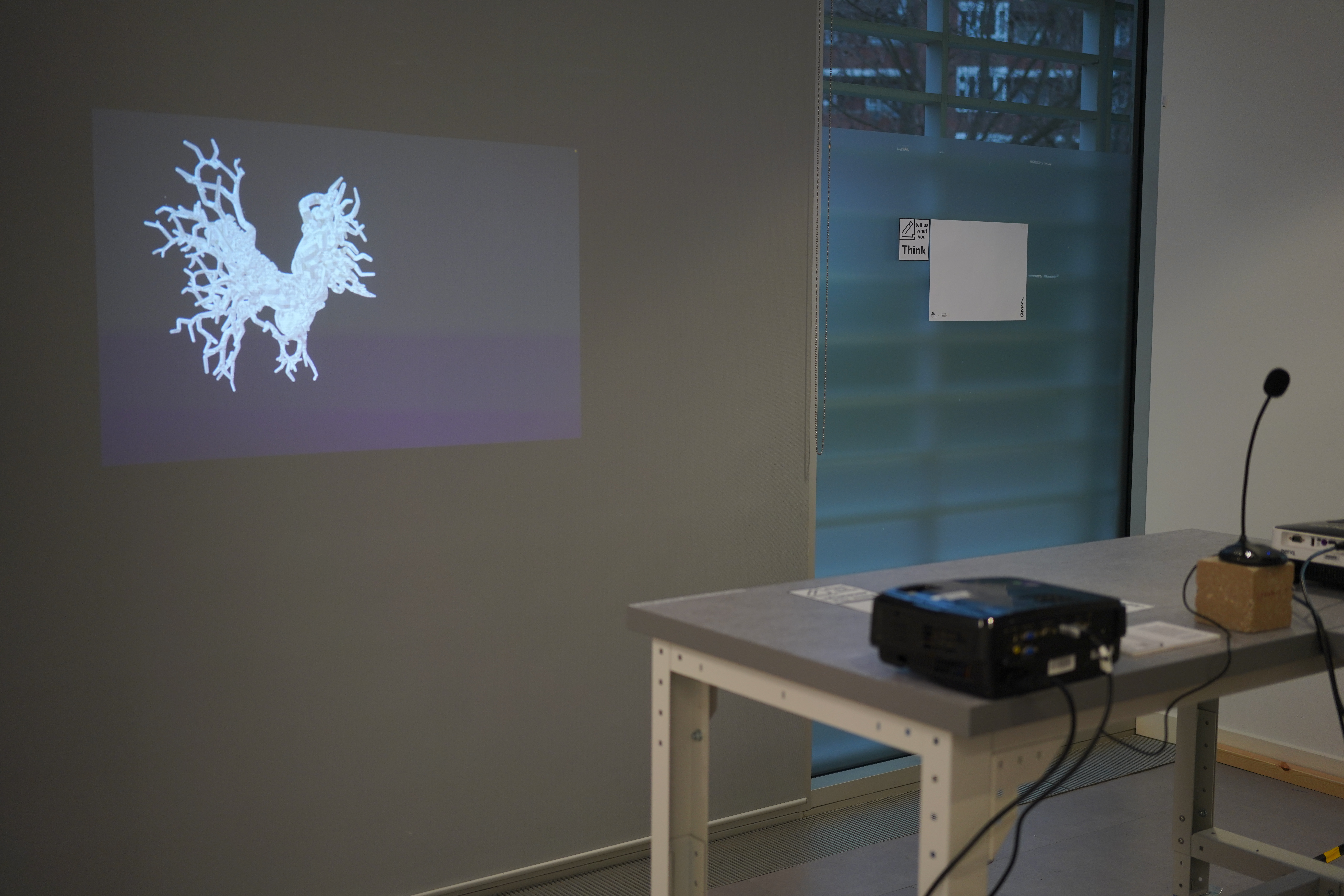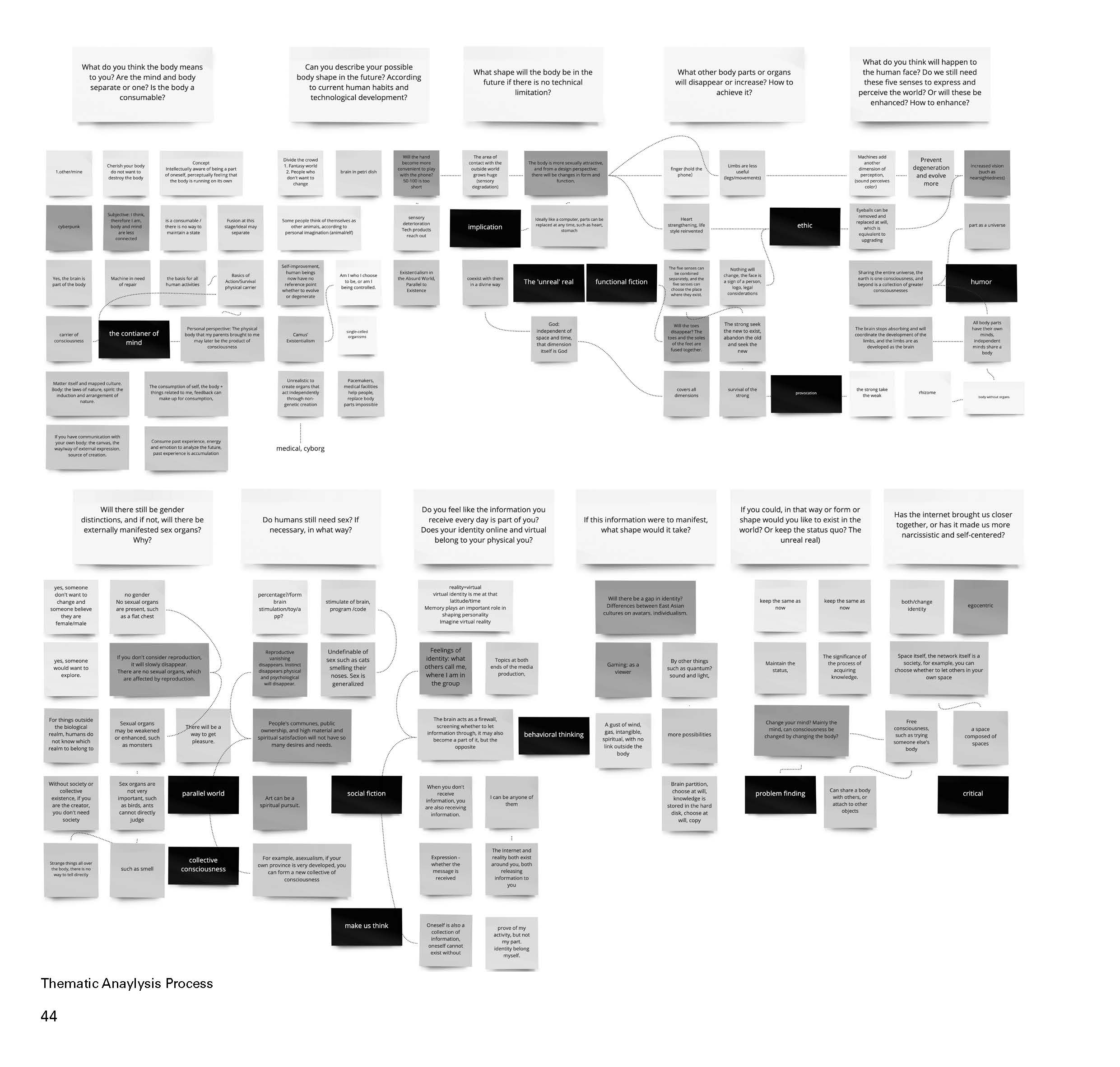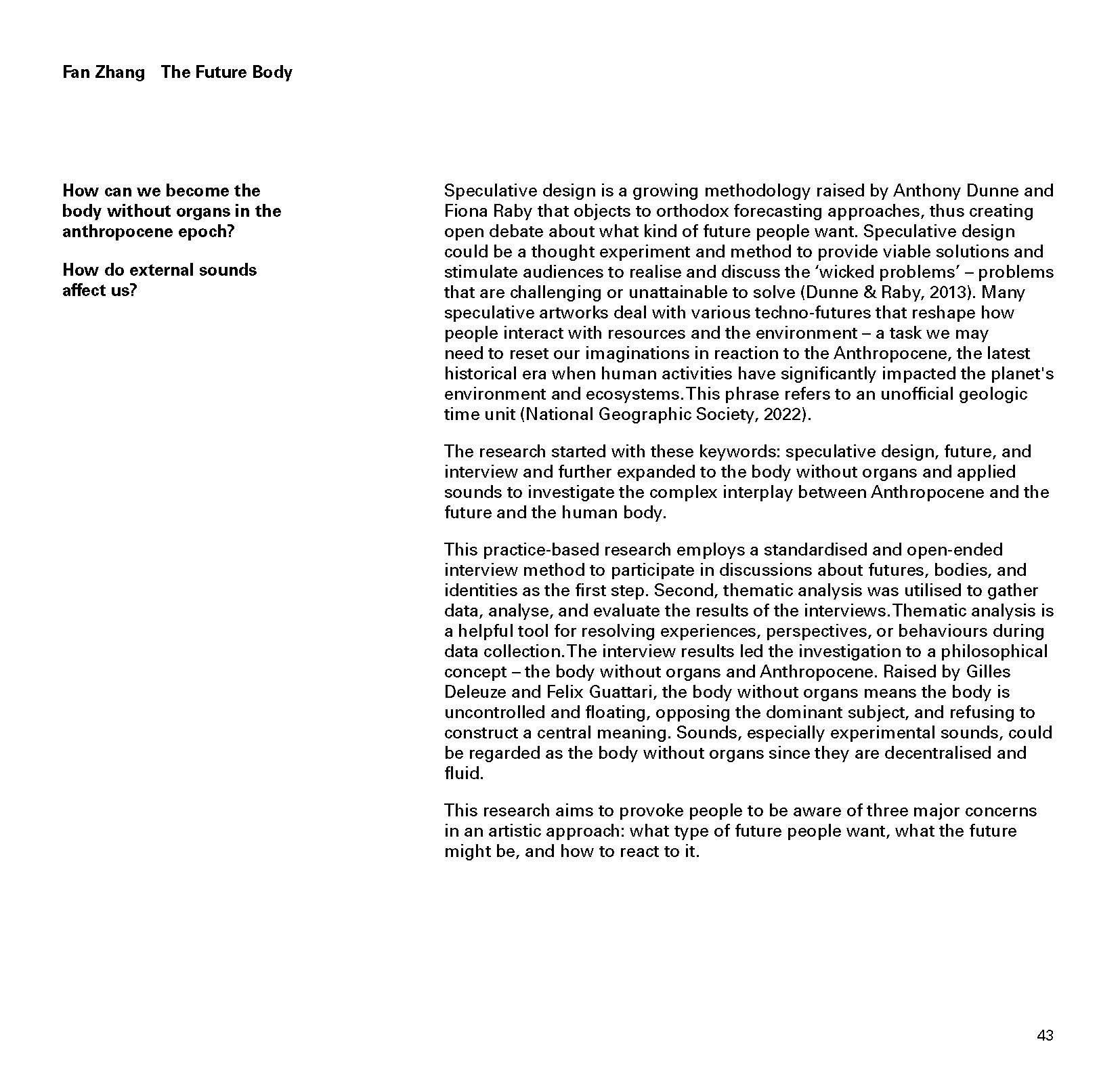The Future Body

Touch Designer / Design research / Projection
2023, London, UK
The Future Body is a speculative design project that explores the relationship between human bodies, sound, and the Anthropocene through generative art. Beginning with open-ended interviews and thematic analysis, the research draws upon concepts such as the “body without organs” (Deleuze & Guattari) and “rhizomatic thinking” to challenge centralized structures of identity and power.




In this interactive system, a hybrid form—part tree, part human spine—visually embodies the tension between freedom and control. Though it appears to move freely in response to random sounds, its behavior is still shaped by hidden systems and coded rules. The work provokes reflection on how we listen, how we adapt, and how external forces invisibly shape our transformations in a world defined by ecological uncertainty and technological governance.
‘The Earth – the Deterritorialize, the Glacial, the giant Molecule – is a body without organs. This body without organs is permeated by unformed, unstable matters, by flows in all directions, by free intensities or nomadic singularities, by mad or transitory particles.’ (Deleuze & Guattari)
The body without organs raised by Deleuze and Guattari indicates that the body is uncontrolled and floating, opposes the dominant subject, and refuses to construct a central meaning. At the same time, a body without organs is not a specific ‘body'; it can be anything that fulfills this requirement, such as a book that lacks a conventional narrative. It is a kind of response and backwash for the daily body under the current cultural system.
Based upon this, the experimental sound also can be regarded as a body without organs since experimental sounds have the characteristics below:
a) Sounds has characteristic of vibration. It causes resonances and various reactions in physical, sensory, and materially-bound brain processes. It reveals how human and non-human bodies and objects are merged. Sound is a vibrating power that creates linkages between human and non-human bodies. These vibrations travel from the source of the sound to a lone listener.
b) ‘Sound is the world as dynamic, as a process, rather than as outline of existence.’ The hearer is fluid to the same degree as the sound object is fluid. The sound source's point is instantaneously disseminated over a field of relations, which positions the hearing subject in that field for a short time. The listener's hearing, perspective, psychology, and culture shape the sound. Each person, community, and culture listen differently.
Some researchers employed sound to analyse the human–nature link. Experimental noises and songs about nature and the environment shared in class inspired me. After researching experimental sounds, I found a connection between the body without organs and experimental sounds.
The experimental sound is analogous to the perception of non-rhythmic time. We no more pursue the narrative's focus. We are lured to the impersonal, objective life of sound instead. The structure's built-in labels no longer specialize, tabulate, or localize time. On the other hand, time is a fluid that has quality. We hear processes and lengths of time instead of structures and systems. Thus, experimental sounds also could be regarded as the body without organs and rhizomes since they are forms of decentralization and fluid.
I trying to ask that: When we believe we touched freedom and unfettered metamorphosis, how can external voices affect us, whether we notice or not? Can we calmly confront when Anthropocene comes and be a body without organs in a world supervised by systems and authority?
